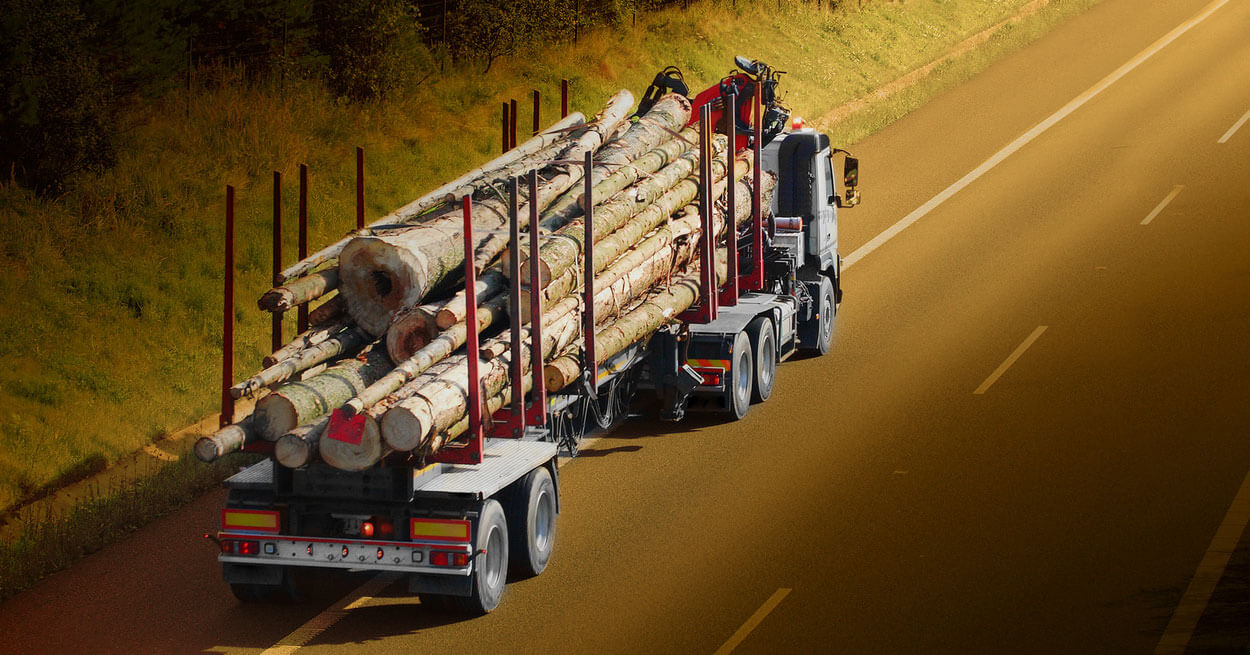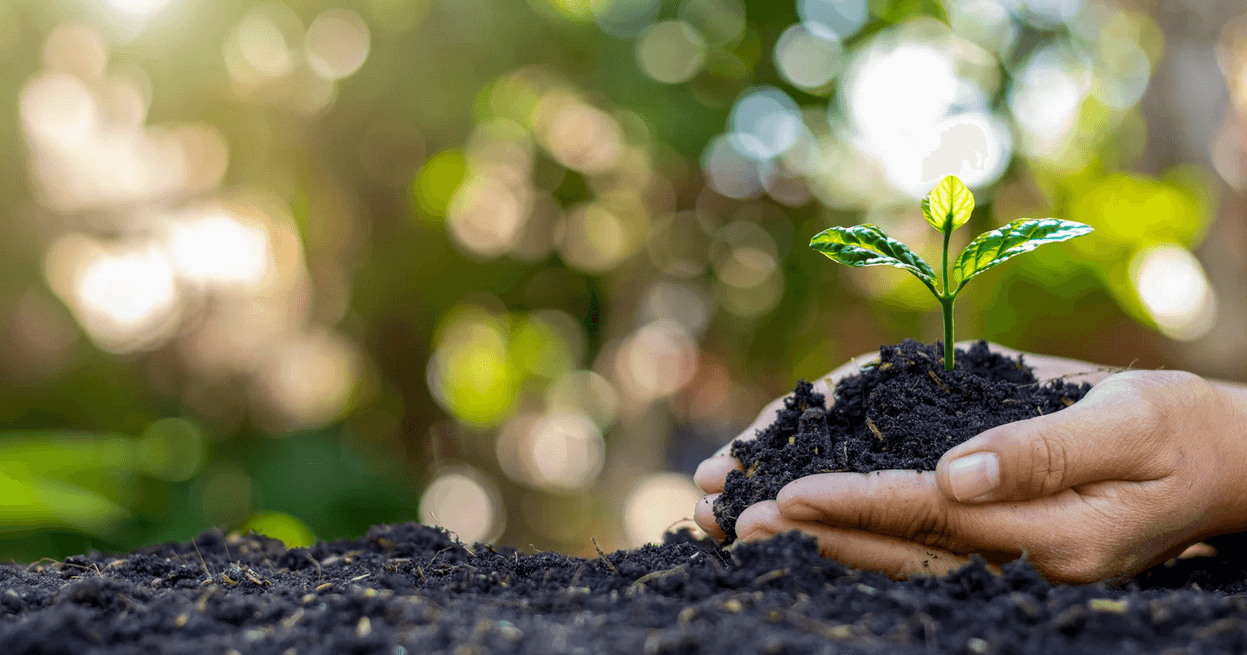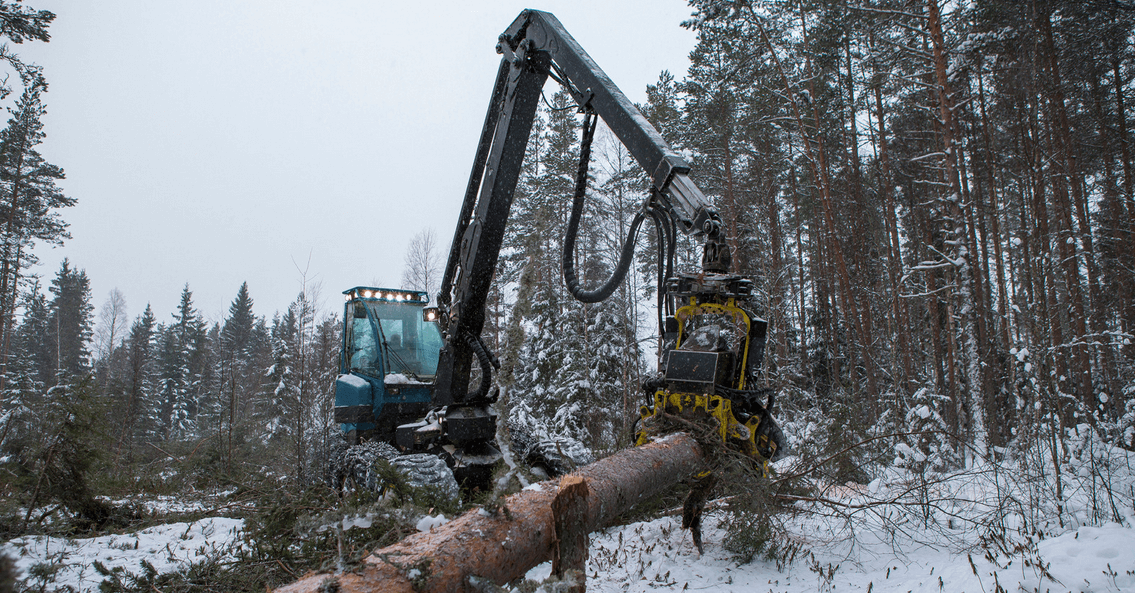Alberta, a province known for its stunning landscapes and rich natural resources, has huge forests that are super important for its economy and the environment. The variety of tree types in Alberta’s forests shows how special the region is and supports industries like lumber, paper, essential oils, and biomass fuels. This blog post explores the cool world of Alberta’s forestry, discussing the trees cut down, their unique traits, and the many ways they’re used. We’ll discuss species like the tall Lodgepole Pine, tough White Spruce, and versatile Aspen and see how crucial they are for Alberta’s economy and local communities. With climate change and habitat loss in mind, sustainable forestry practices are in the spotlight more than ever. This post will dive into the types of trees harvested in Alberta, their uses, and balancing resource use in one of Canada’s most forest-filled provinces.
Overview of Alberta’s Forest Industry
Alberta’s forest industry is a major pillar of its economy, contributing billions of dollars and providing employment opportunities to thousands of residents. Forestry in Alberta is not just about cutting down trees for wood; it is a nuanced sector that requires balancing economic gains with environmental preservation. This balance is achieved through sustainable management practices that ensure the long-term health and productivity of forest ecosystems. Sustainable management includes strategies like replanting trees, protecting wildlife habitats, and using forestry methods that minimize environmental impact.
In terms of operations, Alberta’s forestry sector employs various methods to harvest timber. Clear-cutting, where large forest areas are cut down, is common but increasingly complemented by selective logging. Selective logging involves carefully choosing and cutting down only mature or diseased trees, thereby preserving the forest structure and reducing environmental disturbance. These methods, like shelterwood cutting and seed tree harvesting, reflect Alberta’s commitment to sustainable forestry practices. The emphasis on sustainability protects the environment and ensures that the forestry industry can continue to be a vital part of Alberta’s economy for generations.
Main Types of Trees Harvested in Alberta
Coniferous Trees
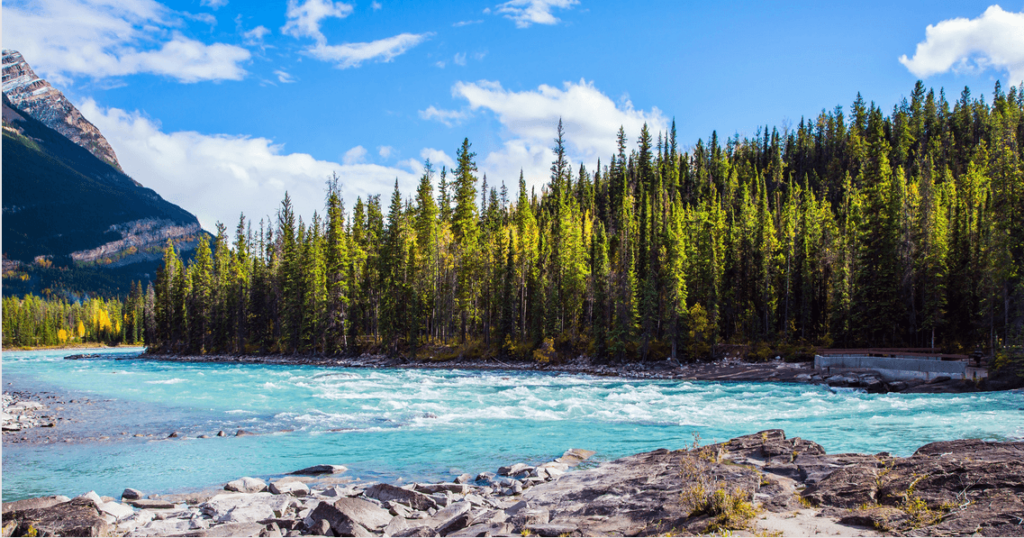
Coniferous trees, often called evergreens because they retain their foliage year-round, are a significant backbone of Alberta’s forestry sector. These trees, distinguished by their needle-like leaves and cone-bearing seeds, thrive in Alberta’s varied climate, from cold winters to warm summers. Among the most harvested in this category are the Lodgepole Pine, known for its tall, straight trunk and utility in construction and pulp industries, and the White Spruce, favoured for its strength and versatility in building materials and paper production. Coniferous forests contribute to the province’s economy through timber and related industries and play a crucial role in maintaining ecological balance, offering habitat to wildlife and acting as natural carbon sinks.
Lodgepole Pine (Pinus contorta)
Description: The Lodgepole Pine is a tall, slender tree that can reach up to 80 feet in height. It’s easily recognizable by its narrow conical shape and the bark that turns from smooth and yellow-brown in young trees to dark and furrowed in older ones.
Habitat and Growth Conditions: Lodgepole pines prefer higher elevations and are predominantly found in the western parts of Alberta. They thrive in sandy or gravelly soils requiring full sunlight and are adaptable to dry and moist conditions.
Commercial Value: Lodgepole Pine is highly valued for its strong and flexible wood, which makes it ideal for construction materials, particularly framing and panelling. Additionally, it’s used for making poles, plywood, and pulpwood.
White Spruce (Picea glauca)
Description: White Spruce is a robust tree that can grow up to 60 feet tall. It features a conical shape, with short, stiff needles and a smooth, grey bark that becomes scaly with age.
Habitat and Growth Conditions: This versatile tree is found across a vast range within Alberta, from lowland bogs to dry, upland areas. White Spruce prefers moist, well-drained soils but can adapt to various soil types and conditions.
Commercial Value: Due to its resilience and medium to fine texture, White Spruce wood is extensively used in the construction industry for products such as lumber, pulp for paper, and crates. It’s also sought after for Christmas trees due to its symmetrical shape and pleasant aroma.
Black Spruce (Picea mariana)
Description: Black Spruce is a small to medium-sized tree that grows to 30-50 feet. It is characterized by its straight trunk and narrow, conical shape. Its bark is thin, scaly, and grayish-brown, while the tree’s needles are short, stiff, and dark bluish-green, giving off a distinctive aromatic scent when crushed.
Habitat and Growth Conditions: Thriving in cooler climates, Black Spruce is commonly found in the boreal forests of Alberta, favouring wet, swampy areas. It is well-adapted to survive in harsh conditions, including poor soil and fire-prone environments, as it can regenerate quickly by releasing seeds stored in its cones after a fire.
Commercial Value: Black Spruce is highly prized for its wood used in the construction and paper industries. Its dense wood makes it suitable for producing lumber, poles, and pulpwood. Additionally, the tree is a source of spruce gum and essential oils, which have various medicinal and fragrant uses. Sustainable harvesting practices are essential to prevent overexploitation and preserve the natural habitats where Black Spruce plays a critical ecological role.
Balsam Fir (Abies balsamea)
Description: The Balsam Fir is a medium-sized conifer that often reaches heights of 45 to 75 feet, distinguished by its pyramidal shape and flat, long-lasting needles that give off a pleasant, balsamic fragrance when crushed. The bark is smooth and gray on younger trees, becoming rougher and more deeply furrowed with age.
Habitat and Growth Conditions: This tree is commonly found in the cool climates of northern Alberta, thriving in moist, acidic soils. It prefers well-drained sites and can be found in pure stands and mixed forests, often alongside spruces and birches.
Commercial Value: Balsam Fir is highly valued not only for its iconic status as a Christmas tree due to its dense, symmetrical branches and long-lasting aroma but also for its wood, used in manufacturing paper and lumber. Additionally, the resin, or “Canada balsam,” extracted from its bark, is used in the optical industry for making microscope slides and in traditional medicine for its healing properties. Sustainable harvesting practices, such as selective cutting and maintaining biodiversity, are crucial for preserving Balsam Fir populations and their habitats.
Deciduous Trees
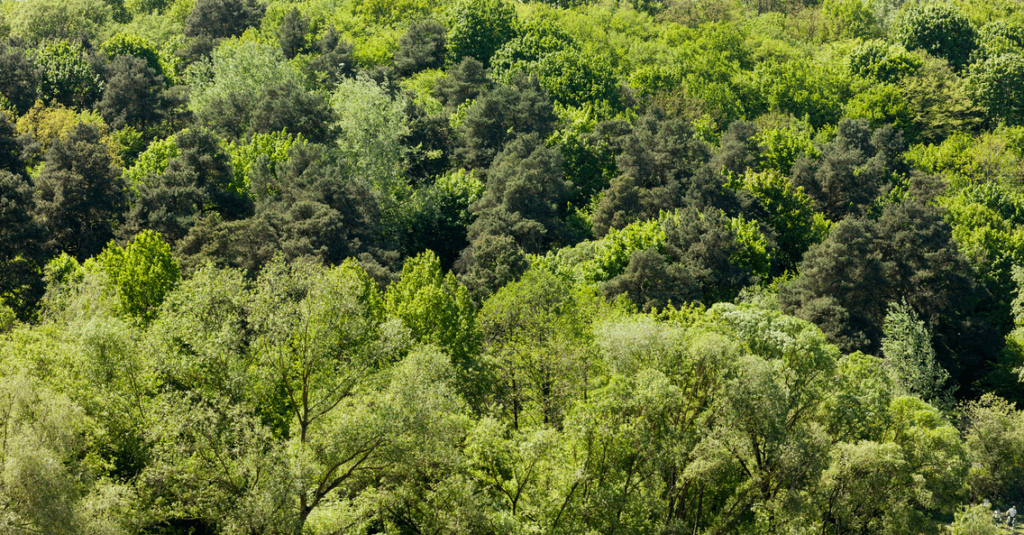
Deciduous trees, contrasting with their coniferous counterparts, mark the changing seasons with their vivid transformations. Shedding their leaves annually, these trees play a crucial role in the ecological balance and the human economy. With leaves that burst into vibrant colours in autumn before falling, deciduous species contribute to biodiversity, act as crucial carbon sinks, and serve various commercial uses. In the following sections, we will explore the dominant deciduous trees found in Alberta, their unique characteristics, habitats, and their significant value in nature and industry.
Aspen (Populus spp.)
Description: Aspen trees, including species like Trembling (Quaking) Aspen and Balsam Poplar, are known for their fast growth and ability to regenerate quickly after disturbances. They have smooth, white bark and leaves that turn yellow in the fall.
Habitat and Growth Conditions: Aspen trees are incredibly adaptable, thriving in various soil types and moisture levels. They’re commonly found throughout Alberta, from wetlands to semi-arid regions, and they often are the first species to repopulate cleared areas.
Commercial Value: Aspen wood is soft but strong, making it a popular choice for manufacturing furniture, pulp, and paper. Due to its quick turnover rate, Aspen is also used in sustainable forestry practices, providing a continuous supply without excessive impact on ecosystems.
White Birch (Betula papyrifera)
Description: The White Birch, also known as Paper Birch, is celebrated for its distinctive white, peeling bark and elegant stature. Growing up to 70 feet in height, it displays a slender profile with oval to triangular leaves that turn a bright yellow in the fall, offering a stunning contrast against its bark.
Habitat and Growth Conditions: White Birch thrives in cool, northern climates and is commonly found throughout Alberta. It prefers sunny, well-drained sites. It is adaptable to various soil conditions but flourishes in moist, sandy, or loamy soils. This species is often one of the first to colonize burned or clear-cut areas, playing a crucial role in forest regeneration.
Commercial Value: The wood of the White Birch is hard and dense, making it valuable for furniture, flooring, and plywood. Its bark, renowned for its waterproof qualities, has traditionally been used by Indigenous peoples to craft canoes and other containers. Additionally, the sap of the White Birch can be tapped to make syrup or fermented to produce birch beer, adding to its diverse commercial applications.
Balsam Poplar (Populus balsamifera)
Description: The Balsam Poplar, standing tall at an average height of 50 to 80 feet, commands attention with its robust stature and thick, fissured bark that darkens with age. Its broad leaves, which turn yellow in the fall, emit a distinctive resinous fragrance in the spring that fills the air with a sweet scent. These trees are easily identifiable by their large, sticky buds coated with a resin used in traditional salves and balms.
Habitat and Growth Conditions: Predominantly found along rivers, in floodplains, and in moist, well-drained soils, the Balsam Poplar prefers abundant sunlight. It is a resilient species capable of thriving in cold climates across Alberta. Its ability to quickly colonize disturbed areas makes it an essential player in natural forest regeneration processes.
Commercial Value: The wood of the Balsam Poplar, while softer and lighter than that of many hardwoods, is highly valued for its versatility. It is used in the production of pulp and paper and the manufacture of crates and pallets. The sticky resin from its buds, known for its medicinal properties, is useful in various therapeutic products. This tree, with its rapid growth and ability to reproduce both sexually and asexually, is also significant in sustainable forestry practices, contributing to ecosystem recovery and maintenance.
Harvested Trees in Industries
Trees harvested in Alberta’s forestry industries serve critical roles beyond their ecological contributions. Highlighted below are some of the primary uses of trees in various industries:
- Construction Industry: Trees like the White Birch and Balsam Fir are valued for their dense, strong wood, suitable for structural materials, flooring, and roofing. Aspen and Balsam Poplar are also commonly used in construction for their quick growth and affordability.
- Paper and Pulp Industry: Aspen and balsam poplar’s soft but strong woods make them preferred choices for producing high-quality paper products, including magazines, books, and packaging materials.
- Furniture Manufacturing: Due to its durability and aesthetic appeal, White Birch wood is commonly used to make furniture, offering both functional and decorative value.
- Pharmaceutical and Cosmetic Industries: The resin extracted from Balsam Fir and Balsam Poplar buds is used in traditional and modern therapeutic products, including salves, balms, and certain perfumes, for its healing properties.
- Cultural and Recreational Products: Indigenous peoples have traditionally used the waterproof bark of the White Birch to craft canoes, while its sap is tapped for making syrup or fermented to produce birch beer, demonstrating its diverse cultural applications.
Sustainability Practices in Forestry
Sustainability stands at the forefront of modern forestry practices in Alberta, ensuring that the vast wealth of forests remains available for future generations while maintaining the ecological balance. A key focus within these practices includes promoting methods that reduce environmental impact, such as selective logging—which targets specific trees for harvest while preserving the surrounding forest structure and biodiversity. Additionally, reforestation initiatives are diligently pursued, with millions of trees being planted annually to replenish harvested areas. These efforts are supplemented by strict regulations that limit the size and frequency of cuts, aiming to mimic natural disturbance patterns and promote a diverse age range among forest stands. Integrating traditional knowledge with scientific research further enriches these sustainability efforts, emphasizing the importance of forests as commercial resources and as vital ecosystems supporting many species, including humans. Through these comprehensive strategies, Alberta’s forestry sector is making significant strides toward achieving a delicate balance between resource utilization and conservation.
Conclusion
The forests of Alberta play a profound role in shaping both the economy and the environment, serving as pivotal hubs of biodiversity, carbon sinks, and sources of raw materials for various industries. The sustainable management and harvesting of these forests contribute significantly to Alberta’s economic vitality, particularly through the construction, paper and pulp, and pharmaceutical industries, and ensure the preservation of these natural resources for future generations. The future of forestry in Alberta appears promising, with an increasing emphasis on sustainable growth and practices that aim to balance economic gains with environmental stewardship. Efforts towards reforestation, responsible harvesting, and innovative forestry practices are imperative to maintain this delicate equilibrium.
Businesses, policymakers, and individuals must support and advocate for sustainable forestry practices to contribute to a sustainable future. Whether by choosing products from responsibly managed forests, supporting policies that protect natural resources, or simply spreading awareness, every action counts towards preserving the rich forestry heritage of Alberta. By collectively committing to sustainability, we can ensure our environment’s and economy’s prosperity for future generations.
San Forestry is dedicated to delivering top-notch log-hauling services in Alberta and Western Canada. Explore our offerings to see how they can address your logging, low-bedding, or private woods needs. For further details or inquiries, visit our contact page.


